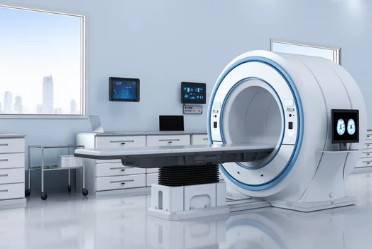Brain tumors are among the most challenging conditions to diagnose and treat. Because the brain is such a complex and sensitive organ, doctors rely on advanced imaging techniques to detect and evaluate tumors safely. One of the most effective tools available today is Magnetic Resonance Imaging (MRI).
If you or a loved one is facing possible signs of a brain tumor, your doctor may recommend an MRI. But why is MRI so important, and what can you expect from the procedure? Let’s break it down.
Why MRI Is Used for Brain Tumor Diagnosis
MRI is often the first-choice imaging test when doctors suspect a brain tumor. Unlike X-rays or CT scans, MRI uses powerful magnets and radio waves instead of radiation to create detailed pictures of the brain.
Here’s why it’s so valuable:
- Superior Soft Tissue Detail – MRI provides clearer images of brain structures than CT scans, making it easier to spot tumors.
- Detection of Small Lesions – Even small or hidden tumors can be detected.
- Tumor Location and Size – MRI helps doctors see exactly where the tumor is and how big it is.
- Differentiating Tumors from Other Conditions – It helps distinguish tumors from issues like infections, inflammation, or stroke.
- Pre-Surgical Planning – MRI guides surgeons in planning safe and precise tumor removal.
Types of MRI Used in Brain Tumor Diagnosis
Not all MRIs are the same. Depending on your situation, your doctor may recommend one or more specialized MRI scans:
- Conventional MRI
Standard scans that show brain anatomy in detail. - Functional MRI (fMRI)
Maps brain activity by detecting blood flow changes. Used to identify areas responsible for speech, movement, or vision before surgery. - Diffusion-Weighted Imaging (DWI)
Measures how water moves in tissues. Helps detect aggressive tumors. - Perfusion MRI
Examines blood supply to the tumor, which may indicate how aggressive it is. - Magnetic Resonance Spectroscopy (MRS)
Analyzes chemical composition in brain tissue to distinguish tumor types. - Contrast-Enhanced MRI
Uses a contrast dye (gadolinium) to highlight tumors and surrounding blood vessels.
How MRI Helps in Brain Tumor Diagnosis and Management
MRI isn’t just about detecting a tumor—it helps throughout the entire treatment journey:
- Initial Diagnosis – Confirms whether a mass is present.
- Characterization – Suggests whether it might be benign (non-cancerous) or malignant (cancerous).
- Treatment Planning – Assists in surgical approaches, radiation therapy, or chemotherapy planning.
- Monitoring Progress – Tracks how well treatment is working.
- Checking for Recurrence – Detects whether a tumor has come back after treatment.
What to Expect During a Brain MRI
If you’ve never had an MRI before, here’s what typically happens:
- Preparation – You’ll remove metal objects (jewelry, watches, hairpins). Some patients may receive contrast dye via an IV.
- Positioning – You’ll lie on a sliding table that moves into the MRI machine. For brain scans, your head is placed in a cushioned headrest to keep it still.
- The Scan – The machine makes loud tapping or knocking sounds while it takes images. You’ll be given earplugs or headphones.
- Duration – The scan usually lasts 30–60 minutes.
- After the Scan – No recovery time is needed; you can go back to normal activities unless you’ve been sedated.
Advantages of MRI in Brain Tumor Diagnosis
- No exposure to harmful radiation
- Clear, detailed imaging of soft tissue
- Ability to detect very small or deep tumors
- Helps distinguish tumors from other brain abnormalities
- Useful for surgical and radiation treatment planning
Limitations of MRI
While MRI is powerful, it does have some limitations:
- Not suitable for everyone – Patients with pacemakers, certain implants, or metal fragments in their body may not be able to have an MRI.
- Claustrophobia – The enclosed scanner may cause anxiety in some patients.
- Time and Cost – More expensive and time-consuming than CT scans.
- False Positives – MRI may detect abnormalities that turn out not to be tumors.
Frequently Asked Questions (FAQ)
1. Is an MRI painful?
No. The procedure is painless, though lying still may be uncomfortable for some.
2. How accurate is MRI for brain tumors?
MRI is highly accurate and usually more effective than CT scans, though a biopsy is often needed for a definitive diagnosis.
3. Do I always need contrast dye?
Not always. Your doctor may recommend it if more detail is needed.
4. Can MRI show if a brain tumor is cancerous?
MRI can suggest the likelihood of cancer, but only a biopsy can confirm it.
Conclusion
MRI is one of the most important tools in diagnosing brain tumors. It provides safe, detailed, and accurate imaging that helps doctors detect tumors, plan treatment, and monitor progress. While it isn’t perfect, MRI plays a vital role in modern brain cancer care.
If your doctor recommends a brain MRI, it’s because it offers the clearest insight into your brain health and helps ensure you get the right treatment at the right time.
Also Read :
